Curious about **violin string notes**? The usual violin comes with four strings: **G, D, A, and E**. Picture this: **Great Danes Always Eat**! It’s a fun and easy way to remember them.
The violin strings are all a perfect fifth apart from one another (that means they’re five notes apart from each other). Some violins are modified to include an extra bass violin string, C, increasing their low range by a fifth – but this is quite unusual!
When violin strings are plucked or bowed without using the fingerboard, this is called playing on the ‘open string’. Playing on the open string usually sounds louder and more sonorous than playing the same note using fingering. The D, A and E open string notes on a violin can also be played using fingers on the fingerboard.
Find out more about ‘Violin fingering’ below.
The ‘gauge’, or thickness, of the violin strings, what they are made of and how tightly they are strung also alters the volume and tone of the sound. Violin strings can be made of steel, synthetic material, or gut (sheep intentines!). These can be thin, medium or thick, and designed to be strung at light, medium or heavy tension.
There are lots of options, but two good things to aim for from your violin strings are comfort and continuity of tone, from the highest note to the lowest.
What Are The Note Names On The Violin?
These twelve violin notes are the twelve semi-tones (or half notes) that make up the octave scale in tonal music. Notice that the sharp violin notes (#) and flat notes (♭) describe the same musical notes using different signs and note names. So a ‘sharpened’ or raised G (G#) is the same as a ‘flattened’ or lowered A (A♭). Join the Ted’s List Music Theory Tutorials to learn more.
The violin has a range of just over four octaves from G3 (G open string) to A7 on the E string. The numbers indicate the octave the note belongs to and how high or low they sound. Scroll down to learn more about this under ‘Tuning the Violin’.
The G String
The G string is the first string and also the lowest note on the violin. Unlike the other strings, the bottom G can only be played on the open string.
The D String
The D string is the second lowest string on the violin. The D string is one whole step (tone) above middle C.
The A String
The A string is the third string on the violin. This string note is also known as A440 or ‘concert pitch’. Scroll down to learn more about this under ‘Tuning the Violin’.
The E String
The E string is the fourth and highest string on the violin.
Violin fingering
Most violin tuning notes are played using the fingers – literally placing a finger onto the violin string to ‘stop’ it in different places. The further the finger along the violin string, the shorter it becomes and the faster it vibrates. The faster the vibration, the higher the note – this is why placing fingers along the string produces increasingly higher pitches.
The index, middle, fourth and fifth fingers are used to pitch the violin strings notes along the fingerboard while the thumb rests in support under the violin neck. For most violinists, these will be the fingers of the left hand while the right hand holds the bow. The ‘positions’ determine where the hand is held and therefore where the fingers are placed along the fingerboard. Let’s start with first position.
Download the violin fingering chart below for fingering across all the violin notes and strings. Practice correct finger placement along the strings by following the chart and listening carefully to whether the notes are in tune as you play. In time, finding the correct pitch will become ‘muscle memory’ and your fingers will know what to do!
Fingering charts of all violin notes
Find the first position by holding the violin towards the top of the instrument neck, so that the index finger rests comfortably a full step (tone) along any of the open strings. The index finger placement is in charge of playing the first two notes along every string, the middle finger plays the next two notes, and the fourth finger the next two again.
fifth finger placement is in charge of the last note on each string. This note is the same as the next open string on the G, D, and A strings. Experiment playing on the fifth finger versus the open string when you practice. Are they in tune with each other? How do the two sounds differ?
When you feel confident in the first position, try shifting the hand one step along the fingerboard so that the index finger rests two tones along the open string. You are now in the second position! Find the third position using the same method.
First, second and third positions are by far the most common in violin music, but there are actually up to fourteen positions on the violin.
Tuning the Violin
The violin is tuned using the wooden tuning pegs in the peg box at the top of the instrument neck, and the fine tuners (little screws) on the tailpiece at the bottom of the instrument. Each string is wrapped around its own tuning peg and fine tuner. It is easy to see which fine tuner is which as they sit directly on top of their string.
See if you can work out which tuning peg is which by following the path of the strings along the violin neck and into the peg box. Use the diagram below if you get stuck!
Most of the tuning work is done by the pegs. Turn them upwards to tighten or ‘sharpen’ the strings, and downwards to loosen or ‘flatten’ them. The fine tuners are used to literally ‘fine tune’ the strings if they need more subtle adjustment. Turn the fine tuners clockwise to tighten or ‘sharpen’ the strings, and anti-clockwise to loosen or ‘flatten’ them. Note, sharpening the string tunes it higher and flattening tunes it lower.
The pegs can take a bit of getting used to and sometimes become stiff or slip out of place if they are not secured firmly enough. Practise using the pegs with your violin teacher before trying it on your own.
How to find the right pitches
When tuning the violin strings, you need to know which G, D, A and E notes you are tuning to. The violin string notes are also known as G3 – D4 – A4 – E5 . This note numbering system is called ‘scientific pitch notation’, and is a useful tool for identifying where your violin string notes sit on the piano. The number indicates how high or low that note sounds, and which octave of C it belongs to on the piano. Middle C is C4, so the violin’s two middle strings, D4 and A4 are in the same octave as middle C.
Follow the instructions under the ‘Tune Your Violin Using A Piano‘ section – see if you can find the violin strings in relation to middle C (C4).
If you are tuning your violin using a digital tuner or an app, you need to know about A440 or ‘concert pitch’. A440 stands for the musical note ‘A’ and its pitch frequency of 440 hertz. If you have ever been to hear an orchestra play, this is the note the musicians all tune to when they first come on stage. It is the same note as A4, the third string of the violin.
Tune Your Violin With A Piano
To tune the violin using a piano, first find the open strings violin notes you want to tune to on the piano keyboard. We have learnt that middle C is C4 and the D and A violin strings are in the same octave as middle C. The G string is numbered ‘3’, so it belongs to the octave below middle C. The E string is numbered ‘5’, so it belongs to the octave above middle C.
Find the violin strings on the piano, using the image below to help you.
Play the note you are tuning on the piano and use the sustain pedal to keep the note going. You will need to play it several times. Sit the violin upright on your lap or on a stable surface with the peg box and strings facing you. Pluck the string and turn its corresponding peg until the pitch matches the piano as closely as possible.
Be careful not to turn the pegs too far, just move them a little bit at a time, and push them in as you turn to avoid slipping. Use the fine tuners to make any further small adjustments.
Tune Your Violin With A Tuner
Make sure your tuner is set to A440 and carefully attach it to the top of the violin scroll.
Tune the violin in the same way you would when using a piano, this time turning the pegs until the tuner indicates the strings are in tune – depending on your tuner, this is when the moving hand hits ‘green’, or hovers over the central line of the dial.
Our Recommended Violin Tuner
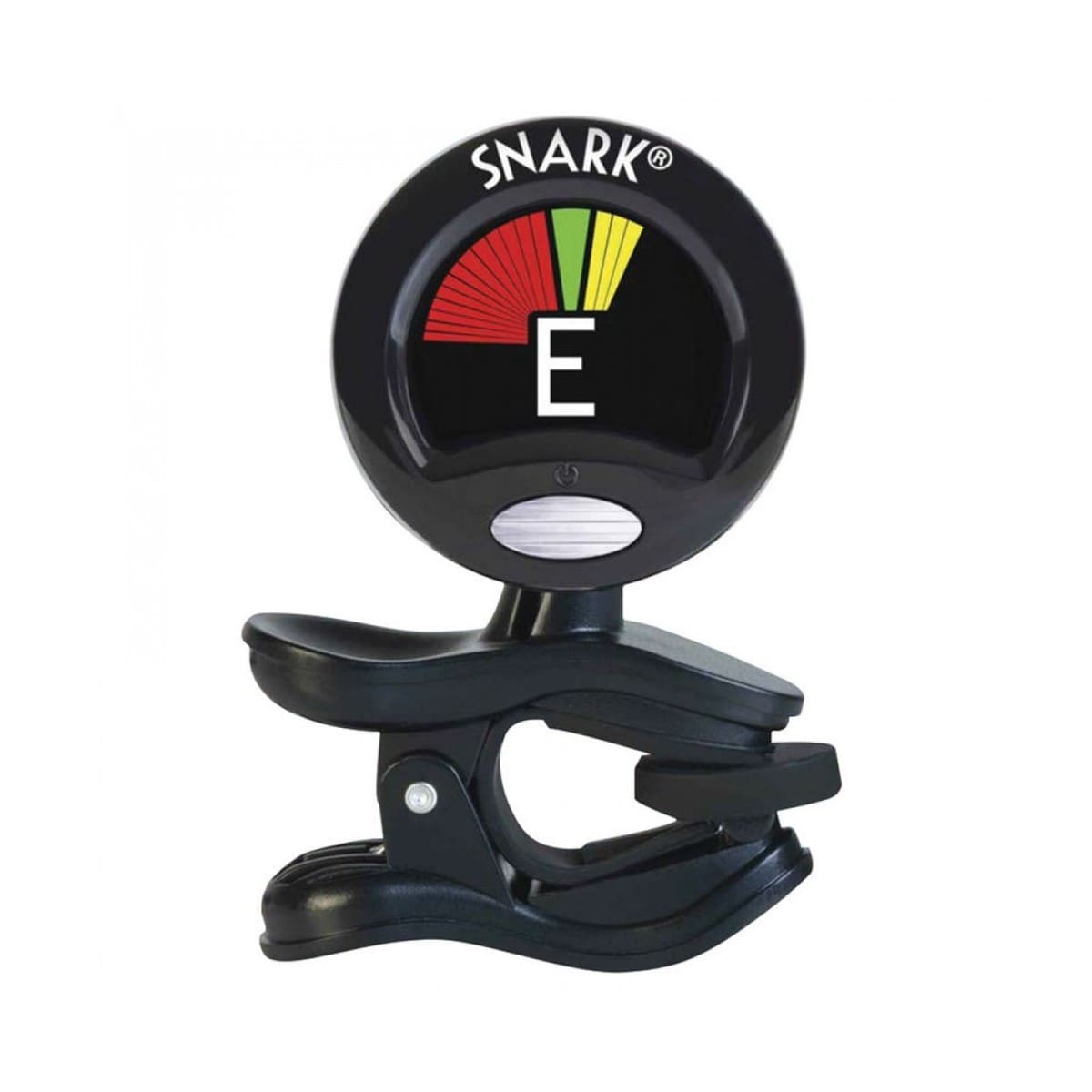
DESIGNED FOR: Violinists of all ages and abilities
BEST ATTRIBUTE: It has a really simple and clear design
FEATURES: A 360-degree swivel action and clip on handle
Snark SN5X Clip-On Guitar Bass and Violin Tuner
When you check the price above, you’ll see there are loads of great places to buy this item. Our personal favorite is Gear4music.
It is the largest music retailer in the UK and fast becoming the most respected online music shop in the US too. Their customer service is excellent, they have competitive prices, really fast shipping, and usually have the longest guarantee.
Most professional musicians use Gear4music, so there is no reason why you shouldn’t too!
- Rotates 360° for easy angling
- Colourful LCD display for easy visualisation
- Compromises on more detailed pitch information
- Not the sturdiest
The professional musician who wrote this article combined many things,
from the product build, manufacturer’s reputation through to feedback
from other users, to create our famous TedScore™.
Tune Your Violin With An App
Violin tuner apps will probably be set to A440, and may also show the universal pitch names G3 – D4 – A4 and E5. Tune the violin in the same way you would when using a digital tuner. Make sure to have your device as close to the violin as possible for best accuracy.
Some apps can play the note out loud so you can hear how it should sound. Use this tool to practise training your tuning ear – try listening while you tune instead of looking at the dial and see how well you do!
Our Recommended Tuning App
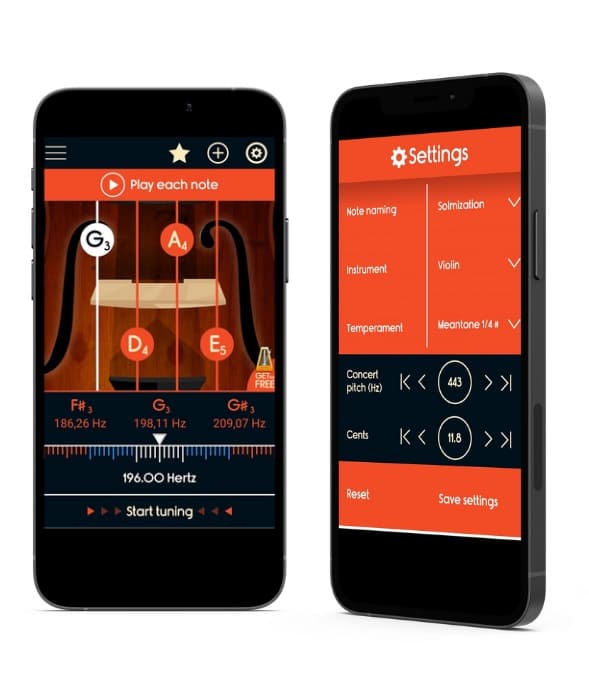
DESIGNED FOR: Beginners
FEATURES: Two modes: Tuner & Pitchfork
PRICE: Free!
MASTER VIOLIN TUNER (NETIGEN Music Tuners)
When you check the price above, you’ll see there are loads of great places to buy this item. Our personal favorite is Gear4music.
It is the largest music retailer in the UK and fast becoming the most respected online music shop in the US too. Their customer service is excellent, they have competitive prices, really fast shipping, and usually have the longest guarantee.
Most professional musicians use Gear4music, so there is no reason why you shouldn’t too!
- Highly sensitive tuner
- Displays universal pitch notation AND note frequencies
- Play aloud' click function to hear the note you are tuning
- Includes banner ads
- Currently only available for Android
The professional musician who wrote this article combined many things,
from the product build, manufacturer’s reputation through to feedback
from other users, to create our famous TedScore™.
Violin String Notes
Summary
Violin strings notes refer to the written musical notations used to play the instrument. These notations include letters (A, B, C, etc.) representing different pitches on each string. Understanding the correspondence between the notes and finger placement on the violin is crucial for violinists to produce desired musical tones.
We hope this article covering the basics of the notes of violin strings is helpful. You may find it helpful to read our complete Beginner’s Guide to Learning The Violin where we dive further into learning how to read sheet music, violin techniques, and much, much more.
Remember to leave us a comment below – and good luck on feeding your Great Danes.
FAQ's
From lowest to highest, the violin string notes are G – D – A – E.
Great Danes Always Eat!
Find first position by holding the violin towards the top of the instrument neck, so that the index finger rests comfortably a full step (tone) along any of the open strings.
A440 stands for the note ‘A’ and its frequency of 440 hertz. It is also known as ‘concert pitch’ because it is the note that all the instruments of the orchestra use to tune. A440 is the same note as the A string on the violin.
The violin has four positions, which are determined by the placement of the fingers on the fingerboard. Each position allows the player to access a different range of notes and can be used to create a variety of musical effects.
To read violin music notes, first learn the names of the notes on the staff and their corresponding finger placement on the fingerboard. Then, practice reading simple melodies and gradually work up to more complex pieces, paying attention to the rhythm, dynamics, and expression markings in the music.
A fiddle is essentially the same instrument as a violin, and therefore has the same number of strings: four. The strings are typically tuned to G-D-A-E from low to high.



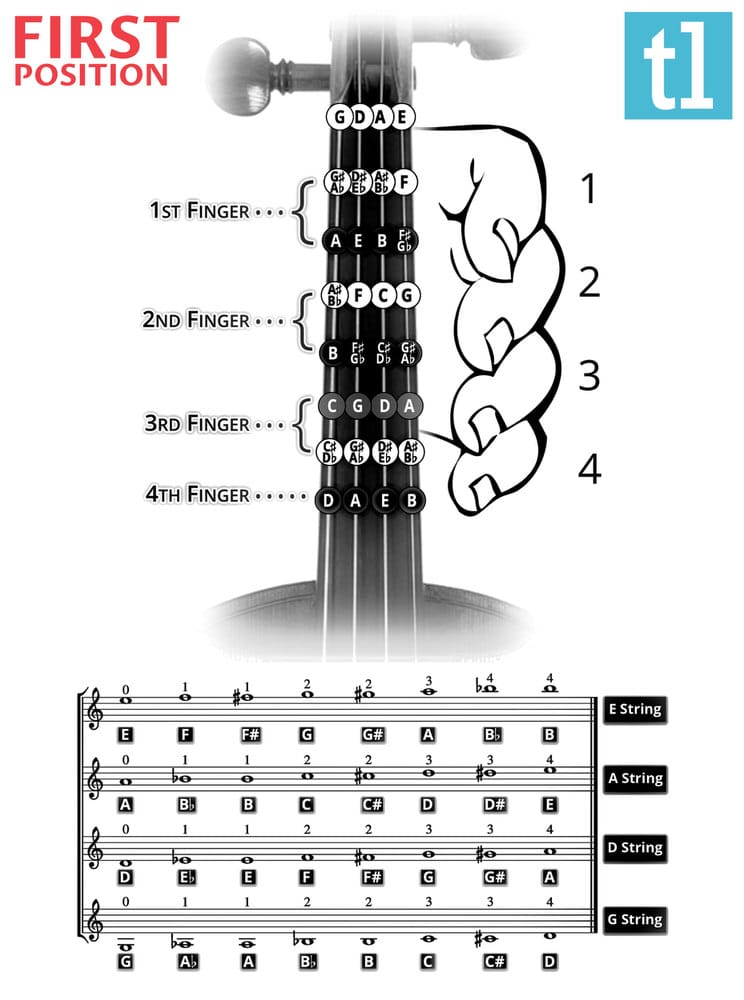
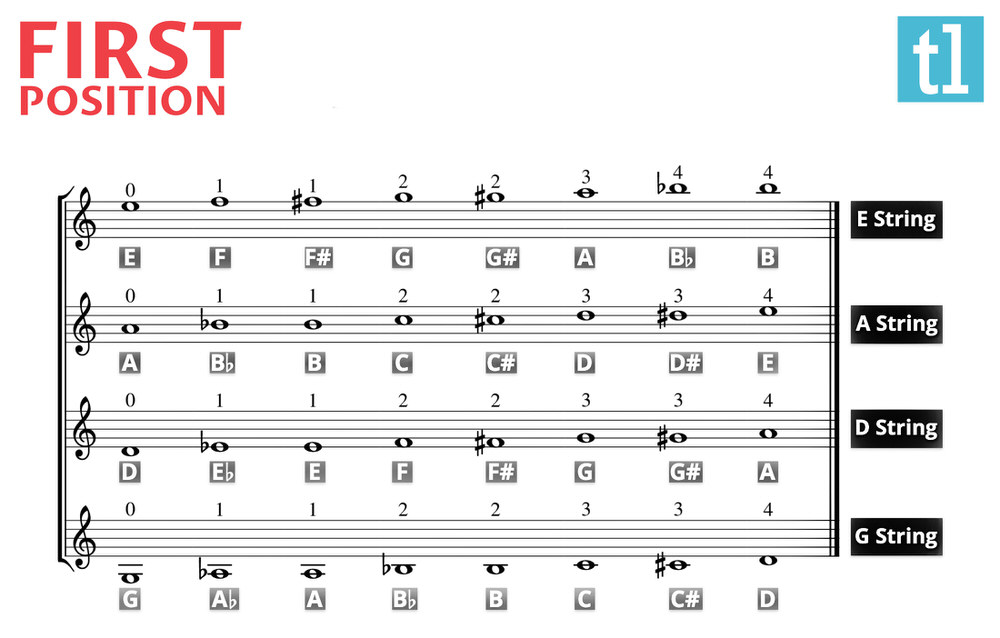

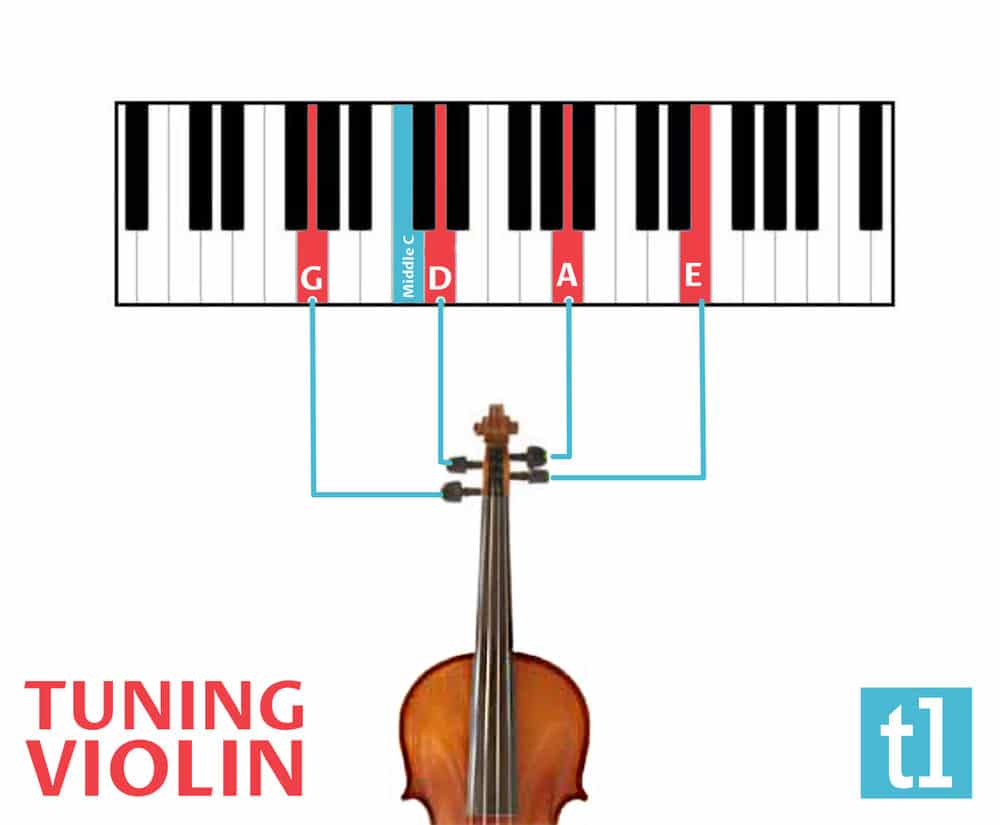







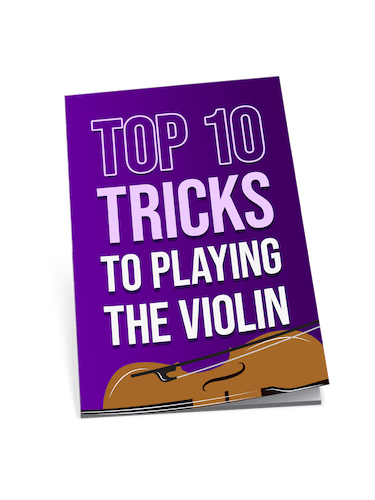
While the article provides a useful overview for beginners, it fails to capture the essence of the violin’s rich history and its place within classical music. The focus on gadgets like apps and electronic tuners may appeal to the modern learner, but where is the encouragement to develop one’s ear in the same way that the great violinists of the past did? There is much more to the instrument than simply knowing where to place your fingers and how to tune it with technology.
I get where you’re coming from, but not everyone’s goal is to be the next great classical violinist. For some, these technologies provide a doorway into music they wouldn’t have otherwise. It’s all about the joy of learning.
Fair point, ModernStrings. Perhaps there is room for both tradition and innovation in the world of violin learning.
Interesting read Kate, but honestly, tuning a violin with an app over a tuner or a piano? Seems like you’re simplifying the art too much. There’s a certain finesse missing in the digital approach, something that’s crucial for any serious violinist.
cool article, makes me wanna try violin
hey, does anyone know if the fingering chart is easy to follow for beginners? just started out and tbh it’s kinda confusing 🎻
Absolutely, Mia88! The chart is laid out in a very intuitive way. Give it some time, and you’ll find it becomes second nature. Keep practicing!